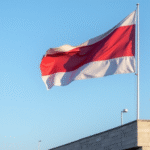What is a Profesiogram and Why is it Essential for Talent Management?
In the realm of human talent management, having precise and structured tools is vital for making informed and strategic decisions. One such tool is the profesiogram, a document that goes beyond a simple job description, providing an all-encompassing understanding of the ideal profile for a position within an organization.
The Profesiogram: A Comprehensive Overview
A profesiogram is a technical document that meticulously outlines the functions, characteristics, educational and experience requirements, competencies, and conditions associated with a job. It offers a complete picture of the role, detailing not only what a person does but also what it takes to perform the job effectively.
Key Stages in Talent Lifecycle Where Profesiograms Excel
- Defining the Role Profile: It clearly establishes the type of individual required for a position.
- Facilitating Selection and Training: By identifying the necessary skills, more effective recruitment processes and precise training plans can be designed.
- Performance Management: It serves as a benchmark for assessing whether individuals meet the position’s standards and expectations.
- Professional Development Planning: It identifies key competencies needed for growth within the company.
Distinguishing Profesiograms from Job Descriptions
While often confused, job descriptions and profesiograms serve distinct purposes in talent management. A job description focuses on detailing operational tasks: what a person does, how, and when they perform their activities, with a functional and technical focus. It primarily serves to manage daily work, assign responsibilities, and establish clear performance metrics.
Conversely, the profesiogram offers a more holistic view of the ideal profile for a position. It doesn’t just describe tasks but identifies the technical, interpersonal, and emotional competencies necessary for successful performance. It’s a strategic tool that simplifies selection processes, performance evaluations, training, and professional development planning by aligning individual capabilities with organizational objectives.
Applied Example: Profesiogram vs Job Description
Position: Human Resources Manager
1. Job Description
Position Objective: Manage and oversee all human resources processes, ensuring the attraction, development, and retention of talent within the company.
- Principal Responsibilities:
- Recruitment and selection of personnel.
- Performance evaluation.
- Organizational development and training.
- Labor welfare and organizational climate.
- Compliance with regulations.
- Payroll and benefits administration.
- Labor relations and union management.
- Bachelor’s degree in Psychology, Administration, or related fields.
- Minimum 5 years of experience in similar roles.
- Knowledge of labor legislation, HR tools, and team leadership.
- Key Competencies:
- Technical: Human Resources Management, specialized software (SAP, Workday), labor legislation.
- Interpersonal: Effective communication, leadership, conflict resolution, empathy.
- Emotional: Resilience, stress management, decision-making under pressure.
- Organizational Psychology.
- Design of training programs and performance evaluation.
- Collective bargaining and labor relations management.
- Office-based corporate work, with potential for external meetings.
- Constant interaction with executives and area leaders.
- Work under pressure, requiring quick responses to personnel crises.
- Proactiveness and strategic thinking.
- Professional ethics and confidentiality.
- Analytical skills and results orientation.
- Structured interviews by competency.
- Psychometric assessments (leadership, emotional intelligence).
- Technical tests (case studies on labor legislation, conflict management).
- What is a profesiogram? A detailed document outlining the ideal profile for a job, including functions, characteristics, educational and experience requirements, competencies, and conditions.
- How does a profesiogram differ from a job description? While a job description focuses on operational tasks, a profesiogram provides a comprehensive view of the ideal profile for a position, identifying necessary technical, interpersonal, and emotional competencies.
- Why is a profesiogram important for talent management? It helps define the standard of excellence in hiring, facilitates selection and training processes, aids performance management, and supports professional development planning.
Requirements:
2. Profesiogram
Position Objective: Ensure effective human capital management, aligning talent processes with the organization’s strategic objectives.
Required Knowledge:
Environmental Conditions:
Personal Characteristics:
Recommended Selection Process:
This practical example illustrates that a profesiogram not only describes a position but also sets the standard of excellence to aim for in each hiring, promotion, or development program. By implementing it as a standard tool in human resource management, organizations can make more strategically aligned decisions, enhance team efficiency, and better leverage human talent with a clearer, more structured vision.






